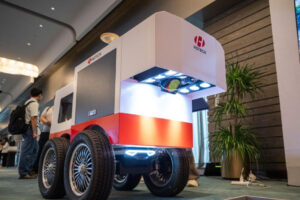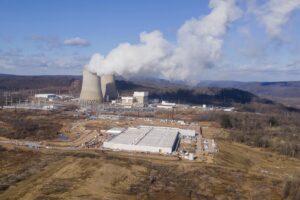Tokyo, 28 February, /AJMEDIA/
Fujitsu on Monday announced that it has provided a new supercomputer system to the Japan Meteorological Agency (hereinafter JMA) for use in linear rainband forecasting.
The new supercomputer system is able to predict the occurrence of linear rainbands which can trigger heavy rain, leading to disasters like landslides and flooding. The JMA will start operations of the new system on Wednesday.
With the new system, Fujitsu will support the JMA in its efforts to provide more accurate and rapid forecasts, allowing authorities to improve preparedness for heavy rain events and offer earlier warnings in case of disasters. In this way, Fujitsu demonstrates its commitment to contribute to the realization of a safer, more secure, and resilient society through disaster prevention and mitigation.
Weather-related disasters including landslides and floods caused by sudden heavy rain falls represent an increasingly severe risk in many regions worldwide. Japan, with its subtropical climate, remains especially prone to this risk and frequently faces torrential rains, which often pose a severe threat to human life and material assets.
Heavy rains are often triggered by linear rainbands, a weather phenomenon that can occur when cumulonimbus clouds slowly move or remain for several hours over the same area.
To this end, an early prediction of the occurrence of linear rainbands plays an essential role in the prevention and mitigation of rain-related disasters.
To address this issue, the JMA introduced a new supercomputer system based on the Fujitsu Supercomputer Primeehpc FX1000, which delivers high performance and high reliability, to improve the accuracy of its linear rainband forecasting. JMA has been developing linear rainband forecasting technology since June 2022 using supercomputer Fugaku and plans to leverage the results in the development of the new system.
Key features and configuration of the new system
The new supercomputer system consists of 24 racks (12 racks each for the main and sub systems), and reaches a theoretical peak performance of about 31.1 PFLOPS. Fujitsu anticipates that this system will rank as one of the world’s top 50 supercomputers under the global “TOP 500” ranking. The storage system consists of high-speed storage with a total capacity of 42.3 petabytes.
The new system will be installed at a data center of Fujitsu, which is equipped with safeguard mechanisms against various disasters including earthquakes and flooding to support business continuity through stable operation management around the clock.
© JCN Newswire









































